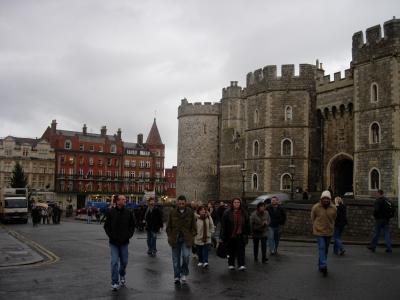
The edge of Windsor Castle, overlooking the town of Windsor. |

The Queen is not home. (If she was, the Royal Standard would be flown, not the Union Jack.) |

St. George's Chapel and the Albert Memorial. |
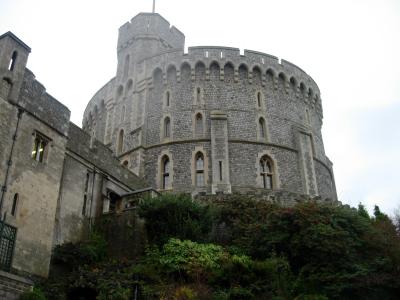
The Round Tower, one of the oldest parts of the castle. |
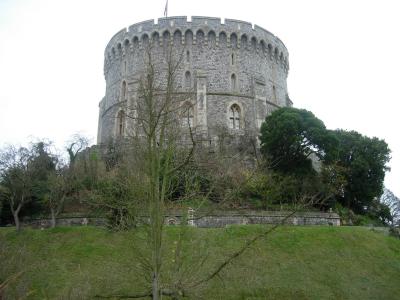
The Round Tower sits on the original earthwork fortified site. |
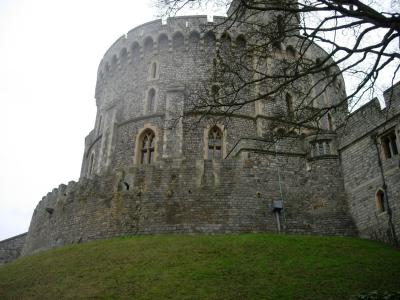
The lowest part of the Round Tower is from William the Conqueror's day. The rest is 19th century. |
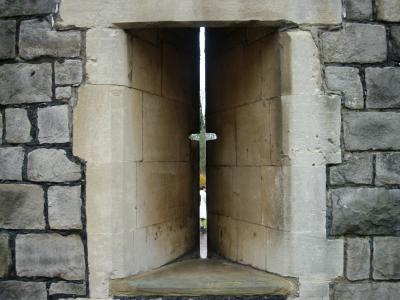
An arrow slit - arrows can go out, but it takes skill for them to come in! |
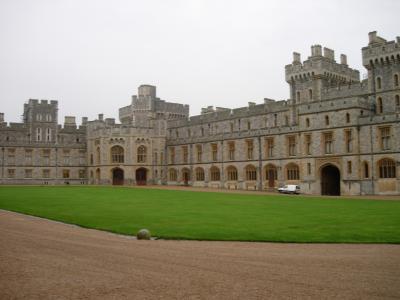
A courtyard inside the castle. |
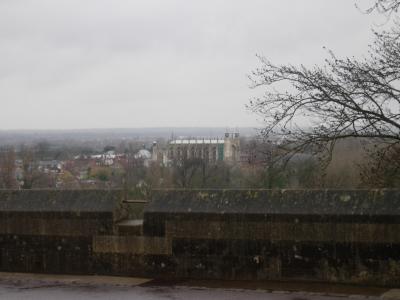
The chapel of Eton College, seen from Windsor's grounds. |
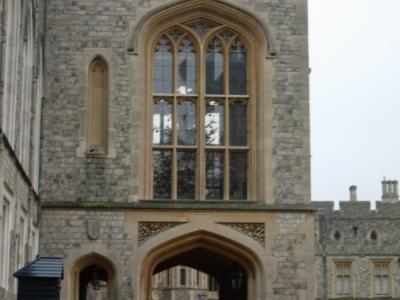
If you look hard, you can see the big Christmas tree through the window. |
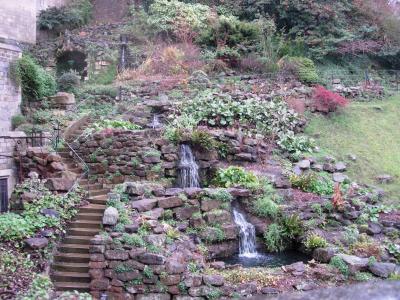
The hill on which the Round Tower sits is the oldest part of the castle, and it's now a garden. |

Another view of the garden below the Round Tower. |
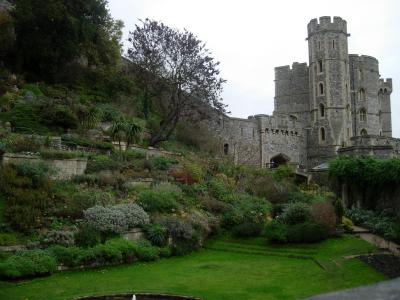
And another garden view. |

This used to be a moat, but the soil here is so porous the water wouldn't stay in. |
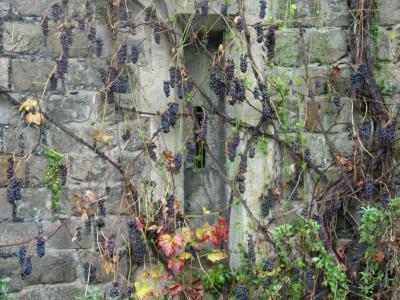
Grapes (Vitis vinifera) growing on a castle wall. |
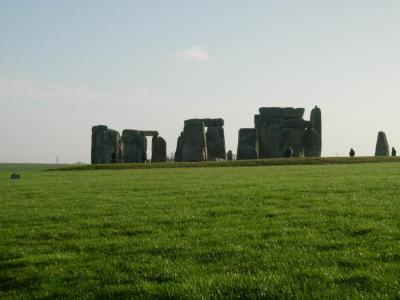
Stonehenge. |
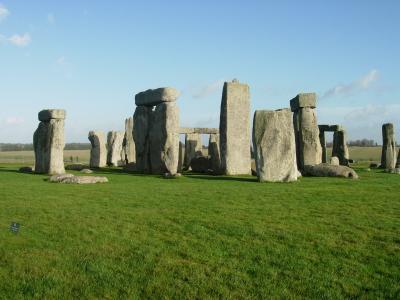
The tall stone in the centre has a very clear bump that would have fit into a socket on the horizontal capstone. |
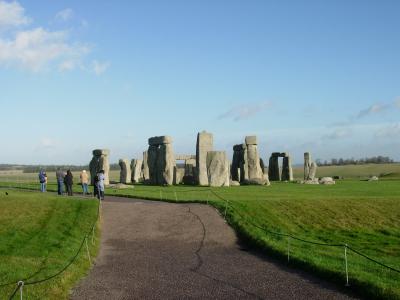
The stones seen from near the beginning of the path. |

A couple of intact trilithons. |
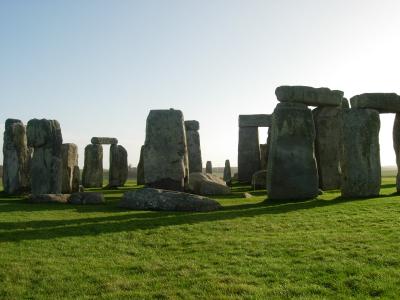
See how long the shadows are? This was just after 1 PM! |

The circle looks fairly intact from this viewpoint. |
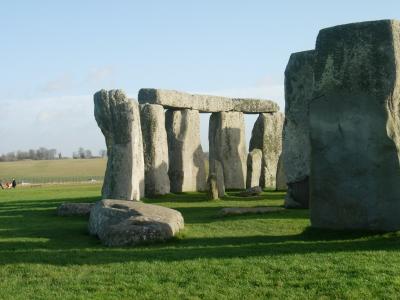
The most intact section. |

Distant Stonehenge. |
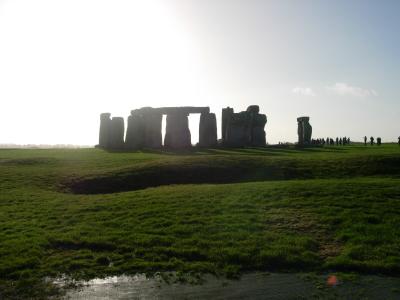
The stones, backlit. |
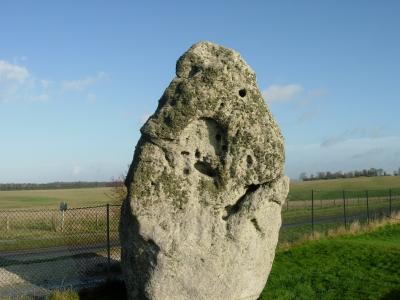
The Heel Stone, the one which casts the shadow into the perfect centre of the circle on Midsummer's Day. |
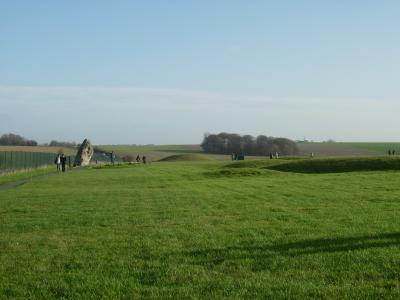
The Heel Stone to the left and a barrow to the right. |
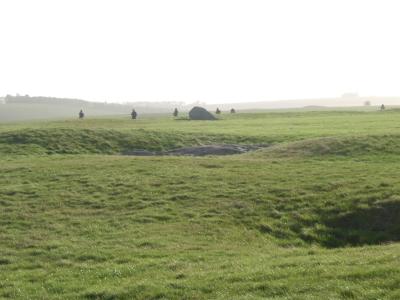
The "Slaughter Stone," half-buried in the grass. |

Barrows (ancient burial mounds) on the hill. |

A typical Salisbury Plain scene. |
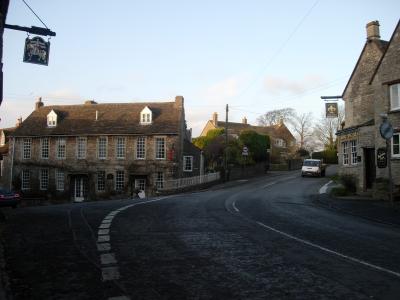
The main street of Norton St. Philip. |
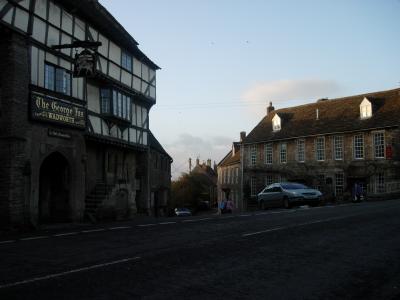
Another view, with the George Inn to the left. |
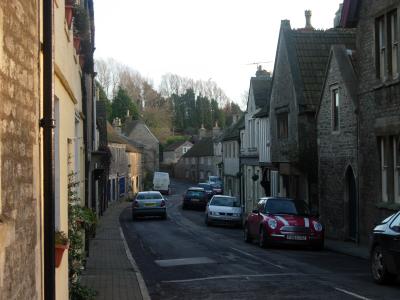
Looking the other way (love the Mini!) |
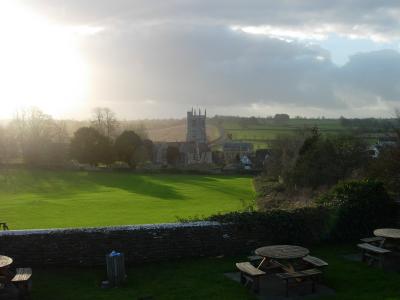
Norton St. Philip's parish church. |

A closer view of the church. |
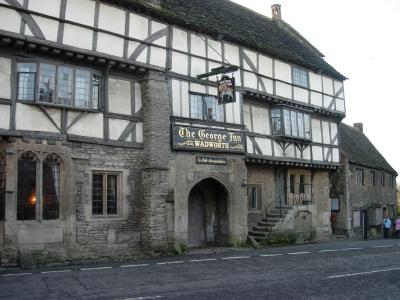
The George Inn, headquarters of the Monmouth Rebellion. |
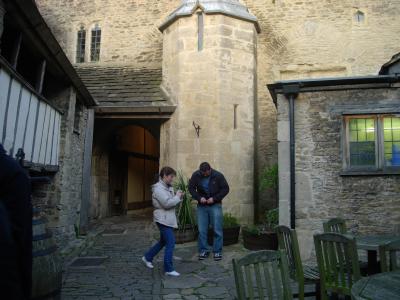
The courtyard of the George, supposedly haunted by the Duke. |
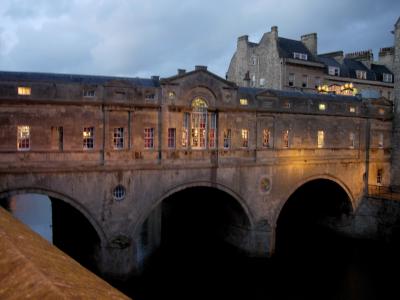
The famous Pulteney Bridge in Bath. |
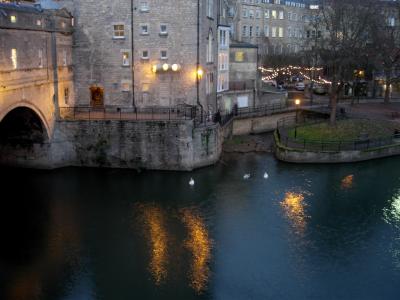
Swans on the river Avon, under the Pulteney Bridge. |

The lights of the other side of Bath across the river. |
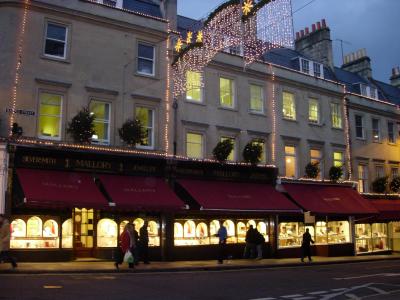
Shops in Bath's downtown, decorated for Christmas. |
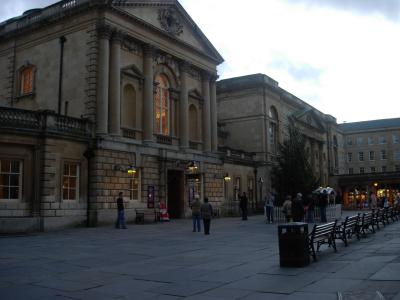
The entrance to the Roman Baths, at left, and the Pump Room, at right. |
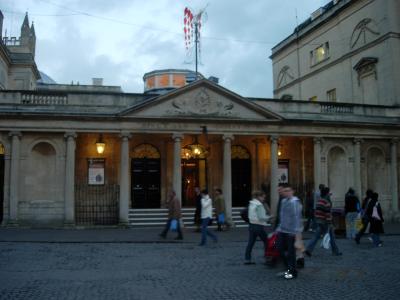
The Pump Room, Georgian aristocrats' favourite hangout. |
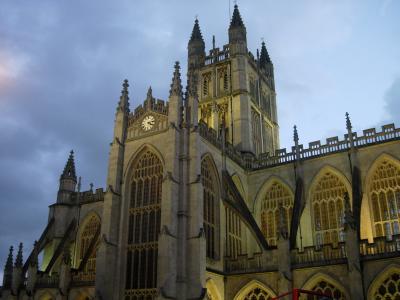
Bath Abbey. |
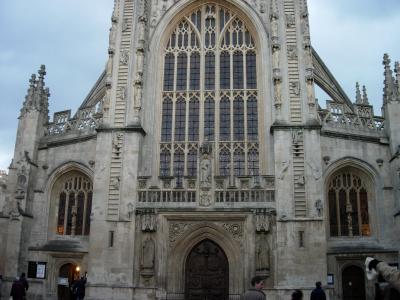
The front of the Abbey. |
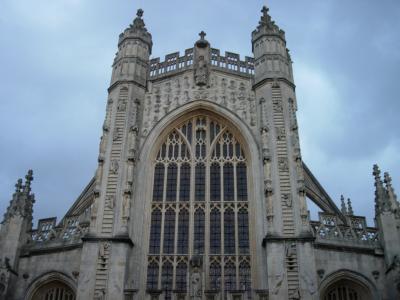
Looking up at the front of the Abbey. |

A closer view of the detail around the Abbey's front door. |

You can really see the warm colour of the local stone here. |
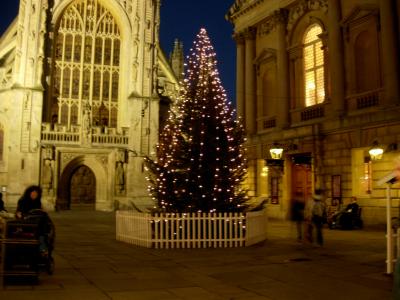
The Christmas tree between the Abbey and the Roman Baths. |

A better view of the tree. |
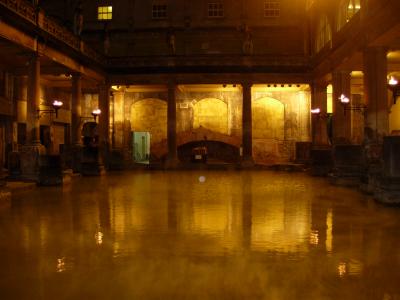
The Great Bath, biggest of the Roman Baths. |
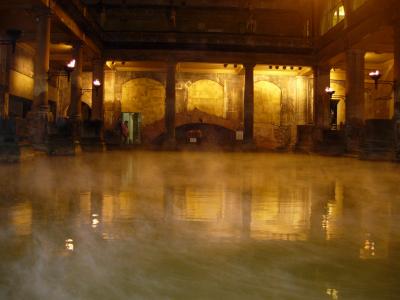
The Great Bath again, steaming. |
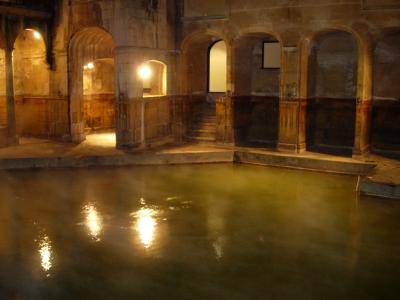
The bath created where the hot spring rises. The Celts thought the spring's bubbling was the breathing of the goddess Sul. |
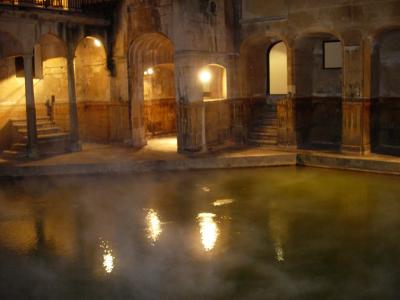
Night is really the best time to see these ruins, I think. |
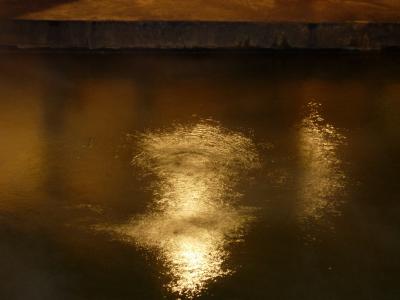
The ripples caused by the spring welling up. |
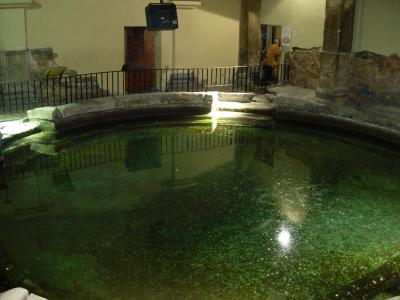
The frigidarium, or cold pool. |
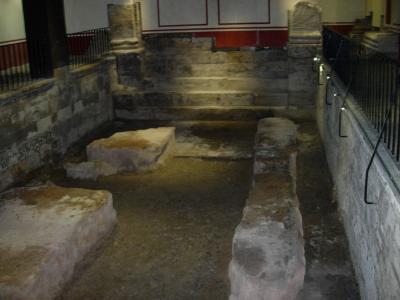
This used to be the sauna room for the baths. |
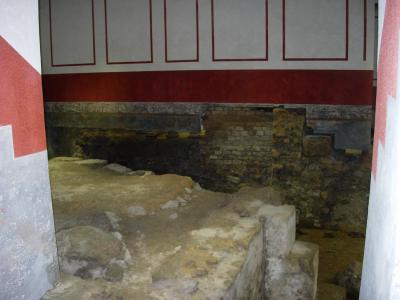
More ruined baths. |
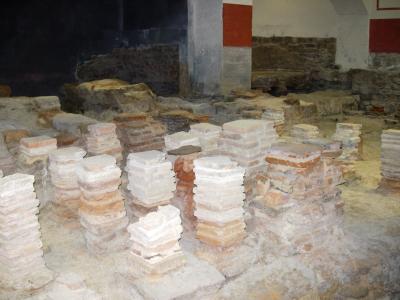
Remnants of the hypocaust system. The pillars acted as floor supports, and hot air circulated beneath the floor. |
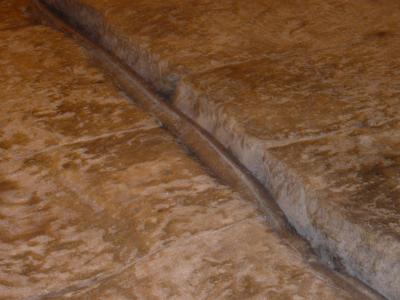
Part of the original Roman lead plumbing. |
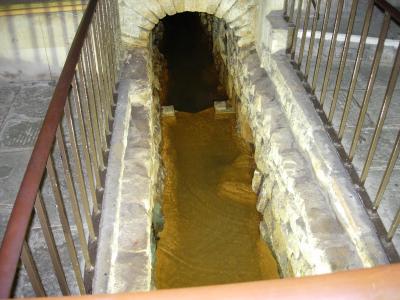
The original Roman drain, still in use. |

The torches around the Great Bath, lit for us. |
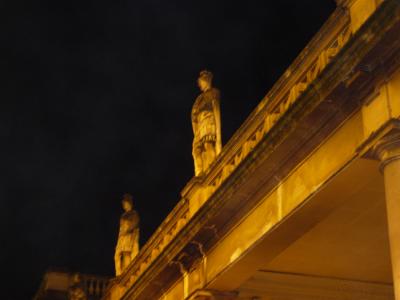
Statues of famous Romans, added when the bath was restored. |
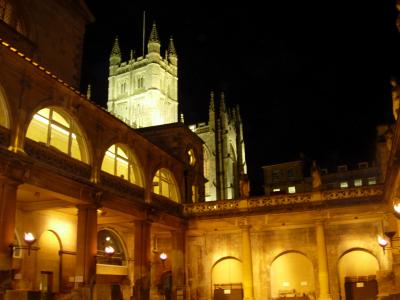
The Abbey, viewed from the Great Bath. |
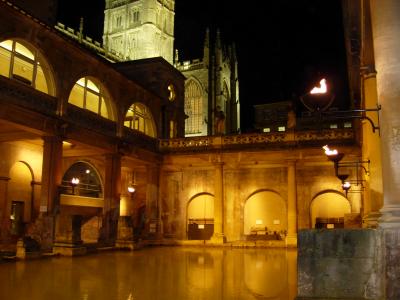
Another shot of the Great Bath and the Abbey. |











